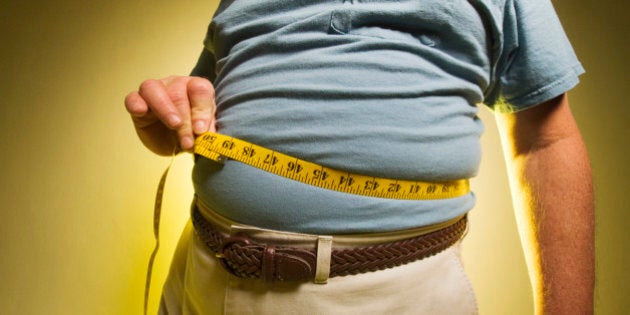
In an earlier post I wrote about the complex causes of obesity. Too much food (especially junk) and too little exercise have an obvious role: too many calories taken in and too few calories expended out. ig portions, lots of sugar and fat, and bodies sitting around watching television or the computer screen all play a part in people getting to XXL. And the risk starts from the beginning. A major study in the U.S., published this year, established that a third of children who are overweight in kindergarten are obese by Grade 8. And almost every child who is obese stays that way into adulthood.
At the same time there is more to obesity than "calories in/calories out." A case in point is a recent study tying body mass index (BMI) to pollutants. That investigation suggests that exposure to second-hand smoke and roadway traffic may be linked to increased BMI in children and adolescents. The study followed 3,316 kids in southern California communities from the age of 10 to 18. Parents of the children were questioned about exposure to smoking and various other pollutants and traffic volume. Many other factors were controlled for: for example sex, initial BMI, parental education and income, and open space and parks near where the children lived.
The researchers concluded that there were significant differences between children who had no exposure to second-hand smoke and roadway pollutants and those who had. BMI was .80 higher in kids exposed to pollution alone, .85 higher for those exposed to second-hand smoke, and 2.15 higher for those exposed to both. More research has to be done on this apparent connection between exposure to second-hand smoke and roadway pollutants and weight gain.
The researchers do point out that, while exposure to second-hand smoke (and smoking itself) has decreased, vehicle miles travelled, exposure to roadway air pollutants, and near roadway residential development have all grown in the United States about the same time as levels of obesity increased. And this study is by no means alone in raising fears about pollutants and other chemicals and their links to obesity.
Endocrine disrupting chemicals (EDCs) to which individuals may be exposed raise grave concerns. They may be linked to obesity in several ways. For example, these substances may increase the number of fat cells, alter the amount of calories utilized while an individual is at rest, and modify the body's mechanisms for appetite and satiety. The White House Task Force on Childhood Obesity has pointed to the possible effects of these substances and called for more investigation. It underscored how exposure to them can easily happen: for instance, baby bottles and plastic containers should not be micro waved unless explicitly labeled as safe for that purpose.
These studies and reports on pollutants and other chemicals contribute to the movement challenging the causes of obesity as simple "calories in/calories out" explanations. We have much more to learn about the complexities concerning excessive weight gain. This is not to suggest that, in the meantime governments should stand by and do nothing. There's lots that can be done to promote better eating/drinking and more exercise and their many benefits. In Ontario the Healthy Kids Strategy could be a big step in the right direction.
But as governments act they should do so primarily in the name of health and with much less emphasis on weight. We don't know, at this point, the extent to which any of these initiatives will reduce or even prevent obesity. It is very difficult for obese people to lose weight and to keep it off: of those who can shed pounds 95 per cent will regain the lost weight (and perhaps more) within a five year period. But these interventions, with a combined impact, could boost healthier living. That's more than enough reason for our public authorities to act -- and act now.
MORE ON HUFFPOST:
